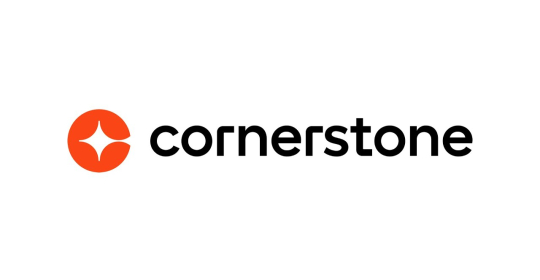Fuelled by surging rates of new market entrants, the maturity and saturation of established sourcing channels have eroded competitive advantages previously offered by mainstream technology solutions.
More users on common commercial platforms has led to more ‘noise’, spiking volumes of recruiter activity, job announcements and candidate outreach which make it harder for agencies to deliver results under traditional models and using their existing online resources.
The open-access nature of social networks and CV databases has also equipped in-house recruitment teams with the same tools used by their staffing partners, spurring internal-external competition and weakening the advantage traditionally held by specialist agencies.
This shifting landscape is driving a need for recruiters to expand their reach – to overhaul their toolkits to include fresh digital solutions which re-establish their competitive edge and enable them to offer a broader, more effective solution to their customers.
Agencies who fail to respond to these new market conditions - or fail to demand better solutions from their technology partners – risk seeking their current business models come under increasing strain and their future performance critically threatened.
A Changing Landscape
The digital revolution profoundly and permanently changed the way recruitment and staffing companies operate.
Less than 20 years ago, many recruitment companies were still principally analogue – the phone was a recruiter’s most essential tool, CVs were faxed to clients and personal contact books were the private goldmines that enabled agencies to make money from their connections.
Then, around the turn of the millennium, online technology re-wrote the rulebook.
At first, the digitalisation of the business world gifted some extraordinary new tools to the recruitment sector, as information and ways to connect with clients and candidates created vast new potential.
Tools such as LinkedIn and Xing mapped out the professional community on an international scale; offering headhunters the ability to message potential candidates directly without the need for personal contact information, as well as charting company hierarchies and identifying decision-makers across all major businesses.
At the same time, online CV libraries gave agencies access to millions of job-seeker details, together with powerful search and data-mining capabilities.
These digital platforms, however, are no longer in their first blush of youth.
LinkedIn, now 17 years old, has ceased to provide the same inside track it first offered to early adopters.
Job boards and CV databases are open to all comers, farmed by every recruiter with a license.
CRM and ATS systems, focused on internal networks, have largely concentrated product development during this time on workflow efficiency – offering little to clients urgently needing to find new ways to match talent with opportunity ahead of their rivals.
So, their previous digital superpowers fade, modern recruitment agencies are now faced with a new set of challenges:
-
Key networking platforms have eroded competitive advantage
Open to any and all subscribers, tools like LinkedIn create a level playing field for agency competition by giving every recruiter on the platform access to message any of its 500m+ members.
-
Platform users have become less responsive
Bombarded by solicitation with both relevant and irrelevant job offers, many social network users are turning an increasingly deaf ear to recruiter advances.
-
Data-thin profiles lack detail for quality engagement
In lieu of a full CV, many social network profiles offer only a bare-bones career summary leaving recruiters with minimal information to find strong matches and engage with a relevant, personalised approach.
-
Out-of-date profiles lead to dead-end solicitations
Social profiles which don’t reflect latest job changes cause recruiters to spend valuable time and money pursuing candidates who don’t match requirements.
-
Social platforms have multiple use cases
Many users of popular platforms are not job-seekers, instead using the platform for business development, networking and market insight.
-
Internal databases are perceived as an agency’s only remaining competitive advantage
As the impact of using popular platforms is diluted, many agencies double down on their internal databases, judging this to be their only viable commercial advantage and limiting their search resources to their existing private networks.
New challenge, new tools
In the face of these changes, agencies are under pressure to expand their reach and re-evaluate their toolboxes.
Recognising that it may now be a decade or more since they last reviewed their core candidate engagement technologies, recruiters are seeking new solutions that will re-establish a genuine competitive advantage - not equip them with the same tools as their global competition.
And, as platforms which were once cutting-edge now become mainstream and over-subscribed, many recruitment business owners are beginning to turn to their technology providers for answers, challenging them to provide the innovation necessary to break the established mould.
Among the most urgent requirements, agencies are looking for ways to:
-
Drive candidate search efficiencies
For all the time-saving potential of digital technology, many platforms remain fragmented and disparate. Agencies are seeking ways to access multiple databases from a single interface, eliminating the need to switch from platform to platform to repeat the same candidate searches.
-
Engage passive or exclusive candidates
Given widespread access to commercial CV libraries, many agencies are locked in a frustrating race to be the first to ‘claim’ the few online profiles that match client job requirements. These businesses are now looking for new networking products which will offer them access to an exclusive network of candidates not accessible to the wider market.
-
Build 3D candidate profiles from cross-platform social data sources
Agencies who anchor their approach in a detailed, personalised candidate service are requesting tools that will collate multiple social network sources to create a rounded profile of every candidate, providing the insight and detail necessary for effective engagement.
-
Leverage executive social networks based on value-driven connections
Just as apps such as Tinder have re-invented online dating by creating a network where mutual interest governs connection approval, in-demand candidates and agencies alike are migrating to innovative social platforms where fit and value determine how executives connect with recruiters.
-
Respond in real-time to personnel moves
Despite the abundance of data generated by online systems, key insights regarding employee resignations, promotions and new hires often fail to reach recruitment teams in a structured, actionable way. Recruiters are hungry for tools which create custom data feeds on market moves, representing opportunity within existing clients, new prospects and potential candidates.
-
Support clients outside of their core niche
Amid increasing market competition, many agencies are facing pressure to consolidate key client relationships by offering a broader solution. No longer rejecting roles which fall outside of their speciality - and supported by platforms that provide integrated search capabilities and pre-populated candidate data - agencies can evolve to become full-service partners to clients, free from the restrictions of their own legacy databases.
Emerging opportunity
With the creation of thousands of new recruitment agencies each year in the UK alone, the competitive climate is set to become increasingly challenging for companies who continue to depend on the same technologies they have used for the past ten years or more.
This crowding of the marketplace, however, creates substantial opportunities for tech-savvy agencies prepared to demand more from their technology partners.
Where traditional recruitment CRM technologies have focused their product roadmaps on areas such as efficiency, back office integration, reporting or user experience, many have failed to develop genuinely game-changing capabilities which provide a true commercial edge for their customers to top drive top-line growth by outperforming the competition.
In response, not satisfied with paying for networking, CRM or database tools which no longer deliver a vital competitive boost, agencies are enjoying new position in the dialogue with technology suppliers.
Once standing in line with thousands of others to gain access to the latest must-have digital product, ambitions business owners are transferring the market pressures their agencies are experiencing into demands for new tech solutions to support their growth.
These solutions represent the next generation of search and recruitment technology – a ‘platform plus’ which provides an integrated package of software, data, insight and actionable revenue opportunities.
Going beyond established and expected functionality parameters, they equip recruiters with an entirely fresh set of tools – ones that build on the previous tier of recruitment technology and provide new solutions to today’s challenges.
Without these vital value-adds, many recruitment companies will continue to operate using the same legacy methods and technology they have worked with since they were established – ceding ground to more digitally-advanced competitors who widen the performance gap just as the original digital revolution did back in the early 2000’s.
Amid the crowding of legacy platforms and the struggle to win out against growing competition, the shifting dynamics are leaving agency owners with a choice: act now to expand their reach and secure the competitive future of their business, or sink further into the noise.
Do Recruiters have the courage to change the things they can?
Paul Thompson Sales and Marketing Director at Voyager Software offered his views on how his Recruiting customers can take increase their reach when looking for the hidden and best talent:
“our Recruitment CRM and ATS Voyager Infinity incorporates a tool called ‘I-Research’, a collection of job-boards, stored Google X-ray searches, algorithms and data sources that allows Recruiter to search multiple platforms simultaneously – it’s hugely valuable. It’s simply not realistic to expect even the most connected Recruiter to know all the candidates, but by pooling the knowledge of your team, and data hidden in say LinkedIn, Xing, Facebook, Twitter, your favourite job-board and social media platforms, you’ll have a far greater reach.
Recruiters today don’t pretend to have all the answers, but some, especially our customers, have all the tools.
Jason Starr, a Director of www.GatedTalent.com offered his view on what’s within a Recruiters control:
“The fact is that executives want to be found by recruiters. Headhunters want to find executives. LinkedIn sits in the middle and facilitates it all. But with one problem. Every update. Every Change. Every note that an executive adds to her LinkedIn profile is visible to recruiters… and colleagues, and employees and bosses.
Candidates in senior positions can’t be seen to be looking. That’s why executives are increasingly turning to services like GatedTalent which allow them to share detailed information on achievements and aspirations with recruiters – but not the rest of the World. Retained executive search firms are increasingly turning to GatedTalent as they find it another route to a highly senior, highly engaged group of global executives.”
David Little from ISV.Online the Skills testing and psychometrics experts added “Having helped some of the biggest recruiting teams in the world the answer is often not about increasing the reach, but ensuring the reach is for quality. Online Skills testing is one way to recruit faster, more accurately and with fewer dropouts and so while I’d encourage anyone to increase their recruiting reach, I’d suggest they reach for the fresh apples and avoid the bad.
Chris Jenkins, Sales Manager at Dillistone Systems, had a different thought on the issue:
“The executive search process incorporates the coming together of executive recruiters as well as executive researchers; both have very different targets, especially so, when referring to expanding their reach.
An executive recruiter needs to be able to pull up critical market insights at the click of a button. That’s why our solution, FileFinder Anywhere, is built around pulling up Summary pages complete with live internet searches of their key clients. A few drag-and-drops later, and you’ve got yourself an impressive market map for pitching business to clients and prospects alike.
Executive researchers, on the other hand, benefit through FileFinder’s Research Zone which comes configured with the ability to automatically search the web for candidates recently appointed, or resigned, for the market verticals they are investigating.
As with most executive search software, you only get out what you put in, and FileFinder makes that process slick and efficient”.







